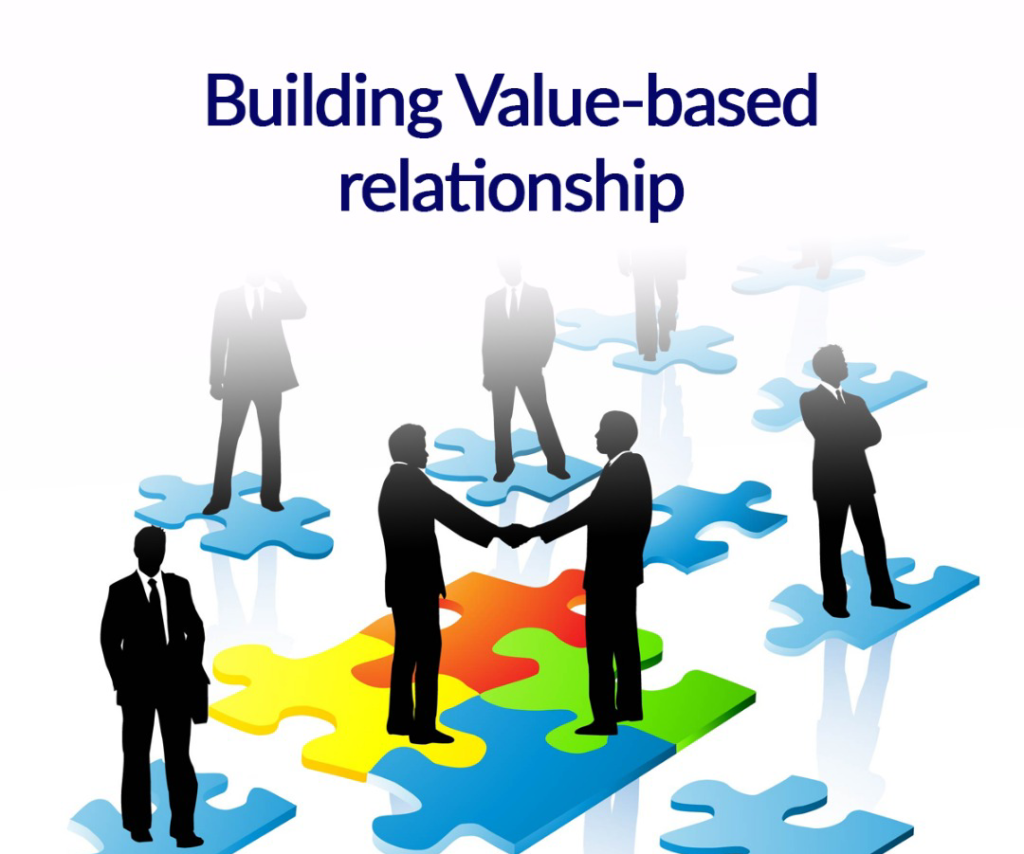becoming a web designer in 2024 is an exciting prospect! The field is constantly evolving, offering ample opportunities for creative and tech-savvy individuals. Here’s a roadmap to guide you on your journey:
>> Unlock passive income Start earning today <<


Hone Your Design Skills
- Master the fundamentals: Learn about design principles like typography, color theory, layout, and visual hierarchy. Familiarize yourself with design software like Adobe Photoshop, Illustrator, and Figma.
- Adobe Illustrator logo
- Develop your visual style: Explore different design trends and experiment to find your unique aesthetic. Build a portfolio showcasing your design skills and creative vision.
- Stay updated: Keep yourself abreast of the latest design trends and technologies. Attend workshops, conferences, and online courses to continuously learn and grow.
Understand the Technical Aspects
- Learn web development basics: Familiarity with HTML, CSS, and JavaScript will give you an edge in understanding how websites are built and function.
- Explore front-end frameworks: Consider learning React, Vue.js, or Angular to build dynamic and interactive web interfaces.
- Understand user experience (UX) principles: Learn about usability, accessibility, and information architecture to create user-friendly and engaging websites.


Build Your Experience
- Start with freelance projects: Look for freelance gigs on platforms like Upwork or Fiverr to gain practical experience and build your portfolio.
- Contribute to open-source projects: Contributing to open-source projects is a great way to learn from experienced developers and showcase your skills to potential employers.
- Participate in design challenges and hackathons: These events are excellent opportunities to test your skills, network with other designers, and build your brand.
Network and Build Relationships
- Connect with other web designers: Attend industry events, join online communities, and network with other designers to learn from each other and find potential collaborations.
- Build relationships with potential clients: Reach out to businesses and organizations that need web design services. Showcase your skills and portfolio to secure freelance projects or full-time employment.


Stay Passionate and Keep Learning
- Web design is a constantly evolving field. Always be curious, keep learning new things, and adapt to emerging trends and technologies.
- Passion is key to success. Enjoy the creative process, experiment with new ideas, and never stop learning and growing.
Hone Your Design Skills
Honing your design skills is a continuous journey, but with dedication and the right approach, you can constantly elevate your abilities and create even more impactful work. Here are some avenues you can explore:
>> Unlock passive income Start earning today <<
Practice consistently:
- Personal projects: Dedicate time to personal projects that allow you to experiment, explore new techniques, and push your own boundaries.
- Design challenges: Participate in online or offline design challenges to receive feedback, learn from others, and tackle unfamiliar creative prompts.
- Daily doodles: Even a few minutes of daily sketching or brainstorming can keep your creative muscles flexed and help you generate new ideas.
Expand your knowledge:
- Courses and tutorials: Invest in online or offline courses, workshops, or tutorials to learn new skills, software, or design theories.
- Books and magazines: Immerse yourself in design books, magazines, and blogs to discover inspiration, stay updated on trends, and learn from renowned designers.
- Observe and analyze: Analyze existing designs you admire, break down their elements, and understand what makes them effective.
Seek feedback and collaboration:
- Join communities: Connect with other designers online or in person to share your work, receive constructive feedback, and learn from each other’s experiences.
- Mentorship: Find a mentor who can provide guidance, offer valuable insights, and help you identify areas for improvement.
- Participate in critiques: Offer and receive critiques in a safe and supportive environment to gain different perspectives and refine your work.
Stay inspired and open-minded:
- Visit museums and exhibitions: Immerse yourself in various art forms, historical and contemporary design styles, and diverse cultures to broaden your aesthetic understanding.
- Travel and explore: Traveling exposes you to new environments, perspectives, and cultural influences, which can spark fresh design ideas.
- Experiment and break the rules: Don’t be afraid to step outside your comfort zone, experiment with unconventional techniques, and embrace creative risks.
Focus on specific areas:
- Master the fundamentals: Ensure you have a solid grasp of design principles like composition, color theory, typography, and visual hierarchy.
- Refine your software skills: Become proficient in your preferred design software and explore new functionalities to create more complex and sophisticated designs.
- Develop your unique style: While learning from others, nurture your own voice and develop a design style that reflects your personality and creative vision.
Remember, honing your design skills is a long-term journey. Celebrate your progress, embrace challenges as opportunities for growth, and most importantly, keep creating!
Understand the Technical Aspects:
Understanding the inner workings of something:
- This could involve understanding the technical specifications, components, and mechanics of a device, machine, or system. For example, “understanding the technical aspects of a car engine” would involve learning about its parts, how they interact, and the principles of combustion that power it.
>> Unlock passive income Start earning today <<
2. Grasping the technical concepts behind something:
- This might involve understanding the underlying principles, algorithms, or scientific theories that drive a process, technology, or phenomenon. For example, “understanding the technical aspects of artificial intelligence” would involve learning about machine learning, neural networks, and the algorithms that allow computers to “think” and learn.
3. Interpreting technical information:
- This could mean comprehending technical data, diagrams, or specifications to form an accurate understanding of something. For example, “understanding the technical aspects of a medical test report” would involve interpreting the numerical values and medical terminology to determine the diagnosis or condition.
4. Applying technical knowledge to solve a problem:
- This involves using your understanding of technical concepts and principles to find solutions to practical problems. For example, “understanding the technical aspects of electrical circuits” might be used to troubleshoot a malfunctioning appliance.
5. Keeping up with technological advancements:
- This means staying informed about the latest developments and innovations in a particular technical field. For example, “understanding the technical aspects of the metaverse” would involve staying up-to-date on the evolving technologies and concepts related to virtual reality and augmented reality.
Ultimately, the meaning of “Understand the Technical Aspects” is entirely dependent on the context in which it is used. To provide you with a helpful response, I need more information about what you are specifically trying to understand. Please provide additional details about the subject matter or situation you’re interested in, and I’ll do my best to help you gain a better understanding of its technical aspects.
Build Your Experience:
Building your experience can be an exciting journey, opening doors to new opportunities and career advancement. Here are some ways you can go about it:
>> Unlock passive income Start earning today <<
Formal Education:
- Pursue further education: Consider enrolling in relevant courses, workshops, or certificate programs to gain new skills and knowledge in your desired field.
- Internships and volunteer work: Look for internship or volunteer opportunities in organizations related to your career goals. This provides valuable hands-on experience and builds your network.
- Academic projects and research: Participate in academic projects or research initiatives related to your area of interest. This demonstrates your dedication and expertise.
Professional Experience:
- Full-time or part-time jobs: Take on relevant job roles, even if they start as entry-level. Each position adds valuable experience and skills to your resume.
- Freelancing and contract work: Offer your skills on freelance platforms or take on short-term contract projects to gain diverse experience and build your portfolio.
- Shadowing and mentoring: Find opportunities to shadow professionals in your desired field. This allows you to observe their work firsthand and gain valuable insights.
Personal Development:
- Personal projects and independent learning: Dedicate time to personal projects that allow you to experiment, explore new skills, and build your portfolio.
- Networking and professional communities: Actively attend industry events, conferences, and workshops to connect with other professionals and learn from their experiences.
- Professional development resources: Utilize online tutorials, webinars, and other educational resources to continuously learn and update your skillset.
Additional Tips:
- Identify your goals: Define your career aspirations and tailor your experience-building efforts towards achieving them.
- Seek feedback and mentorship: Don’t hesitate to ask for feedback from experienced professionals and seek mentorship opportunities to guide your development.
- Showcase your accomplishments: Create a strong portfolio or online presence that highlights your skills and experience.
- Be proactive and resourceful: Don’t wait for opportunities to come to you. Create your own opportunities and be persistent in your pursuit of experience.
Remember, building experience is a continuous process. Be patient, stay motivated, and celebrate your progress along the way. The more you invest in your development, the more valuable and prepared you become for future opportunities.
Network and Build Relationships:
Building a strong network and meaningful relationships takes effort and intentionality, but the rewards are significant: increased opportunities, career advancement, personal growth, and a supportive community. Here are some steps you can take:
>> Unlock passive income Start earning today <<
Put yourself out there:
- Attend industry events: Conferences, workshops, and meetups are excellent opportunities to connect with like-minded individuals and establish contacts.
- Join professional organizations: Consider joining organizations relevant to your field or interests. This offers access to networking events, mentorship opportunities, and valuable resources.
- Volunteer your time: Volunteering not only allows you to contribute to a good cause, but also presents an opportunity to meet new people and build connections.
Become a connector:
- Introduce people: If you see two people who might benefit from knowing each other, make the introductions. It’s a great way to build trust and strengthen your network.
- Organize events: Take the initiative to organize informal gatherings or small-scale events in your area, bringing people together in a relaxed setting.
- Support others: Share resources, offer help, and celebrate others’ successes. Building genuine connections fosters mutual respect and stronger relationships.
Be a good listener and communicator:
- Show genuine interest in others: Ask questions, actively listen, and remember details about people’s lives. This fosters deeper connections and makes you memorable.
- Be authentic and approachable: Be yourself, be positive, and show genuine interest in getting to know others. People gravitate towards those who are easy to talk to.
- Communicate effectively: Express yourself clearly, be respectful, and maintain open communication. Strong communication skills build trust and make you a reliable networking partner.
Leverage online platforms:
- Connect on LinkedIn: Utilize LinkedIn to connect with professionals, join industry groups, and showcase your skills and experience.
- Engage on social media: Engage authentically on relevant online communities, share valuable content, and participate in discussions to build your online presence and connect with others.
- Explore online networking platforms: Look for platforms specific to your interests or industry where you can find like-minded individuals and build connections.
Remember, building relationships takes time and effort:
- Be patient and persistent: It takes time to cultivate strong connections. Don’t get discouraged if you don’t see immediate results, keep putting yourself out there and nurturing relationships.
- After meeting someone, follow up with a personalized message or invite them to connect further. Staying in touch strengthens bonds and demonstrates your interest.
- Invest in quality over quantity: Focus on building genuine connections with a few key individuals rather than chasing a large network of superficial contacts.
By following these tips and being persistent, you can build a strong network and develop meaningful relationships that will benefit you both personally and professionally. Good luck!
Additionally, if you have any specific goals or areas where you’d like to focus your networking efforts, please let me know. I can offer more tailored advice and resources to help you on your journey.
Stay Passionate and Keep Learning:
Staying passionate and engaged in learning is a lifelong journey, filled with its own unique rewards and challenges. Here are some ways to ignite your curiosity and fuel your learning flame:
>> Unlock passive income Start earning today <<
Connect with your “why”:
- Revisit your initial spark: Remember what first drew you to this passion or subject area. Rekindling that initial excitement can motivate you to persevere through challenges.
- Define your goals: Set clear, achievable goals for your learning journey. Having a tangible target keeps you focused and provides a sense of accomplishment along the way.
- Find inspiration in others: Surround yourself with mentors, communities, or individuals who share your passion. Their enthusiasm and expertise can be contagious and keep you motivated.
Embrace a growth mindset:
- Challenge yourself: Step outside your comfort zone and tackle new, unfamiliar concepts. The initial difficulty can be rewarding when you overcome it and expand your knowledge.
- Celebrate small wins: Acknowledge and celebrate every step you take, no matter how small. This reinforces positive behaviors and keeps you moving forward.
- See mistakes as opportunities: Embrace every setback as a learning opportunity. Analyze what went wrong, adjust your approach, and try again with newfound insight.
Make learning an adventure:
- Diversify your learning methods: Mix up your learning methods to keep it fresh and engaging. Read books, listen to podcasts, watch documentaries, experiment hands-on – explore different avenues to find what ignites your curiosity.
- Connect with the practical: Find ways to apply your learning to real-world situations. Seeing the practical value of knowledge can make it more engaging and meaningful.
- Turn learning into play: Make learning fun! Explore interactive games, participate in workshops, or even create your own learning projects. Injecting an element of playfulness keeps you excited and engaged.
Remember, staying passionate and keeping learning is a continuous process:
- Be patient: Learning takes time and effort. Don’t get discouraged if you don’t see immediate results, keep showing up and putting in the work.
- Take breaks and recharge: Don’t burn yourself out! Make time for rest and relaxation to maintain your energy and prevent burnout.
- Reward yourself: Celebrate your achievements along the way. Acknowledge your progress and treat yourself to something special to reinforce positive behaviors.
By following these tips and fostering a lifelong love of learning, you can turn your passion into a source of endless growth, enjoyment, and personal fulfillment. So, keep exploring, keep asking questions, and never stop learning!
Remember, the most important thing is to find what truly sparks your curiosity and fuels your fire. Let that be your guide on your unique learning journey, and never hesitate to seek new ways to keep the flame burning brightly.
I hope this inspires you to continue your lifelong journey of learning and discovery!
- Online courses: Platforms like Coursera, edX, and Udemy offer a variety of web design courses for all skill levels.
- Bootcamps: Intensive bootcamps can provide you with the skills and knowledge needed to become a web designer in a short amount of time.
- Mentorship: Find a mentor who can guide you through your learning journey and provide valuable career advice.
Remember, becoming a successful web designer takes time, dedication, and continuous learning. But with the right approach and passion, you can turn your dream into a reality and make your mark in this exciting field.
>> Unlock passive income Start earning today <<
I hope this helps! Feel free to ask if you have any other questions.
Thank you for taking the time to read my rest of the article, How to Become a Web Designer in 2024
